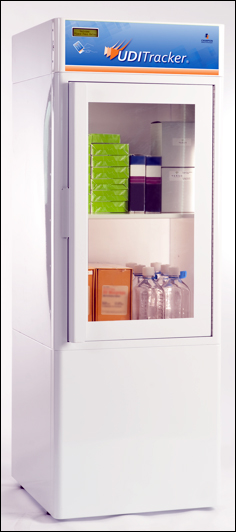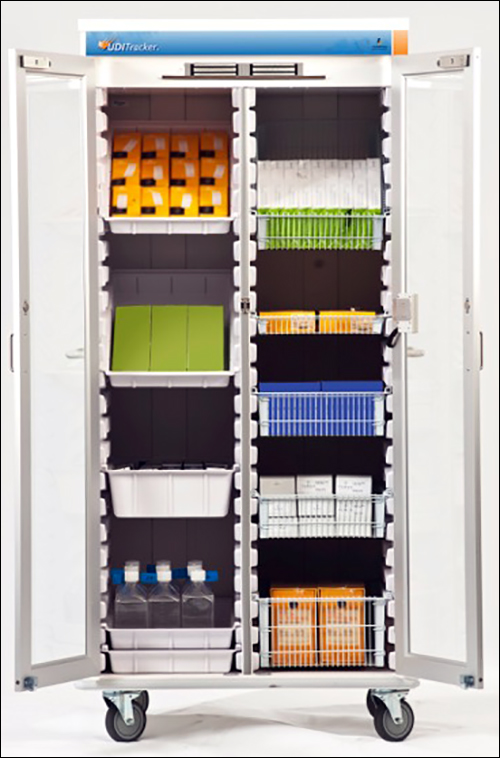Jun 29, 2015Champion Medical Technologies provides hospitals with software for tracking tissue and implantable medical devices. Since the company released an RFID version of its software in late 2012, approximately 15 percent of its clients have transitioned to that product, enabling them to know where their high-value supplies and devices for surgeries and implantations are located. The RFID storage solution differs from Champion's conventional UDITracker by incorporating RFID technology into cabinets to automate the collection of location data.
Of the company's approximately 300 clients employing its UDITracker software platform for managing data about the receipt and use of implantable devices and tissues, 40 to 50 are now using RFID. About a quarter of those companies are currently in the process of adding RFID cabinets to their existing solutions, says Peter Casady, Champion Medical Technologies' CEO.
The typical client orders a single RFID-enabled freezer for storing tissues and two RFID-enabled cabinets for storing medical devices. Champion Medical's RFID-enabled cabinets, refrigerators and freezers are provided by Terso Solutions. The entire solution consists of the RFID-enabled cabinets, refrigerators and freezers, tags for products stored within them, and the UDITracker software to manage data about each item. That information can include expirations dates, serial numbers and any manufacturing information, such as the location and date of manufacture. The software can then provide users with information about what is in each cabinet, what has been removed, by whom, when this occurred, and what might need to be reordered, or may be about to expire.
Hospitals keep a certain percentage of tissues and implantable devices onsite for surgeries. Regulatory requirements are in place regarding how these items are stored, how quickly they are used and, in the case of tissues, how long they might have been exposed to room temperatures. The Joint Commission requires that hospitals maintain records for a minimum of 10 years and be able to provide those records when requested by regulators.
With the UDITracker RFID storage solution, all of this is accomplished through the use of RFID and bar codes. When an implant arrives at the hospital, a bar code on the packaging is scanned in order to enter device information, supplied by the manufacturer, into the UDITracker software. Champion provides a spool of Avery Dennison AD-317 RAIN UHF RFID tags, and users peel a sticker off the spool and attach it to that package, while also scanning the bar code on that tag in order to link it to the product in the software.
When the item is placed in a refrigerator, freezer or cabinet, an Impinj Speedway RFID reader and antennas built into the unit capture the tag ID number and store it in the software. Every time the container door is closed, it triggers the Speedway reader to capture the ID number of each UHF tag within, and forwards that data to the software via a cabled connection. That information is then compared against the previous reading event, in order to identify what has been added or removed from that container.
The system also knows who has conducted that activity. That's because the cabinet or freezer is locked until the user presents a low-frequency (LF) RFID badge with his or her identification information linked to the ID number encoded to the RFID tag in that person's badge. The ID is also forwarded to the software, which authorizes that user to open the cabinet, and stores that individual's name.
If an item is used during surgery, the bar-coded number on its packaging is scanned, which links that product with that particular patient's procedure. If such a scan does not take place and the device or tissue remains out of its RFID-enabled container for an excessive amount of time, an alert can be displayed for those using the software. A text message can also be sent to authorized recipients.
The software is offered as a hosted, cloud-based service. Users can purchase or lease the cabinets, refrigerators or freezers, paying an annual subscription fee for access to the data.
End users did not respond to requests for comment. Casady, however, says customers have reported to his company that the system has saved them a significant amount of time and effort. Because compliance reporting requires daily updates regarding which items are stored at what temperatures, he notes, the manual labor required to accomplish record keeping is considerable. With the use of UDITracker, that record-taking process is eliminated and compliance reports are more thorough as well, since readings are taken with each opening of the container door.
Before Casady's company began offering the RFID system, customers had told him about the challenge of loss, when products left cabinets, refrigerators or freezers and couldn't be located, or when they remained at room temperature for too long and thus had to be discarded. "Hospitals are writing off billions of dollars every year due to waste or loss," he states, due to a lack of visibility into what was removed from storage and when. "We were aware of that need," he says, and customers have told him that the system is, in fact, reducing the incidence of loss since it knows when products were removed, and by whom.
The RFID-enabled cabinets and coolers vary in size and functionality, according to Joe Pleshek, Terso's CEO. "Our product line generally offers a small and large version for each temperature (requirement)," he says, such as freezer, refrigerator or room-temperature cabinets. Cabinets range from 7.9 cubic feet to 25 cubic feet, refrigerators are between 5.5 cubic feet and 20 cubic feet, and freezers are sized from 5.5 cubic feet to 20 cubic feet.




